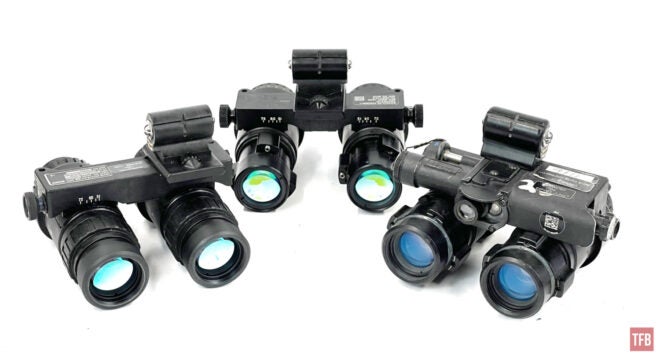Hello readers. Did you enjoy reading last week’s article about Gibbous Outfitters’ MP5K upgrades? This week we take a look at ANVIS alternatives. Specifically, the AVS-6 (V2) and PVS-23. These are goggles based on the ANVIS design but have very specific use cases. Let’s take a closer look at these dual-tube systems.
ANVIS @ TFB:
- Friday Night Lights: Nocturn Industries Chimera-10 Articulating ANVIS-10 Bridge
- Friday Night Lights: Dual Tube Spotlight – Fenn ANVIS WFOV And They Can Explode!
- Friday Night Lights: Dual Tube Spotlight – RNVG, Sentinels, & ANVS
AVS-6 (V2)
ANVIS NVGs are often entry-level dual-tube goggles that many start off with. They are not as desirable as other dual-tube housings for a couple of reasons. ANVIS goggles are primarily designed for aviation purposes. The housing is lightweight but at the cost of being fragile. It does not make sense to ruggedize them when the primary operator is sitting comfortably in a cockpit. Another compromise with ANVIS goggles is the objective lenses. They have coatings to help filter certain wavelengths of light that coincide with a matching filter for the instrument panel inside certain aircraft. This acts as a sort of low pass filter and can block certain wavelengths of visible light. Some can filter out green which makes it hard to see green VIS lasers or green dots.
Today we are looking at a rather uncommon ANVIS alternative called the AVS-6 (V2). When talking about ANVIS dual tube goggles, the most common ones are the AVS-6 and AVS-9. They are almost identical except for their objective lenses. AVS-9 has rotating lenses. So when you adjust focus, the entire lens cell rotates. AVS-6 were used by the Army and their objective lens cells translate when you focus them. The other collar rotates to adjust focus but the actual lens cell moves forwards and backwards. This is for use with certain lens-mounted HUDs. So when you adjust focus, the HUD does not rotate with the lens.
What I have here is an ANVIS alternative, the AVS-6 (V2). The (V2) is very specific and you should immediately see the difference.

AVS-6 (V2) on the left. AVS-9 on the right.
Have you figured out what’s different? Something seems . . . a little bit . . . off. Yes, the ball detent is offset.


Who would need an offset ball detent? Cobra helicopter pilots do. Cobra helicopter pilots have something called the Helmet Sighting System (HSS). See the photos below that I found on Gear-Illustration.com.
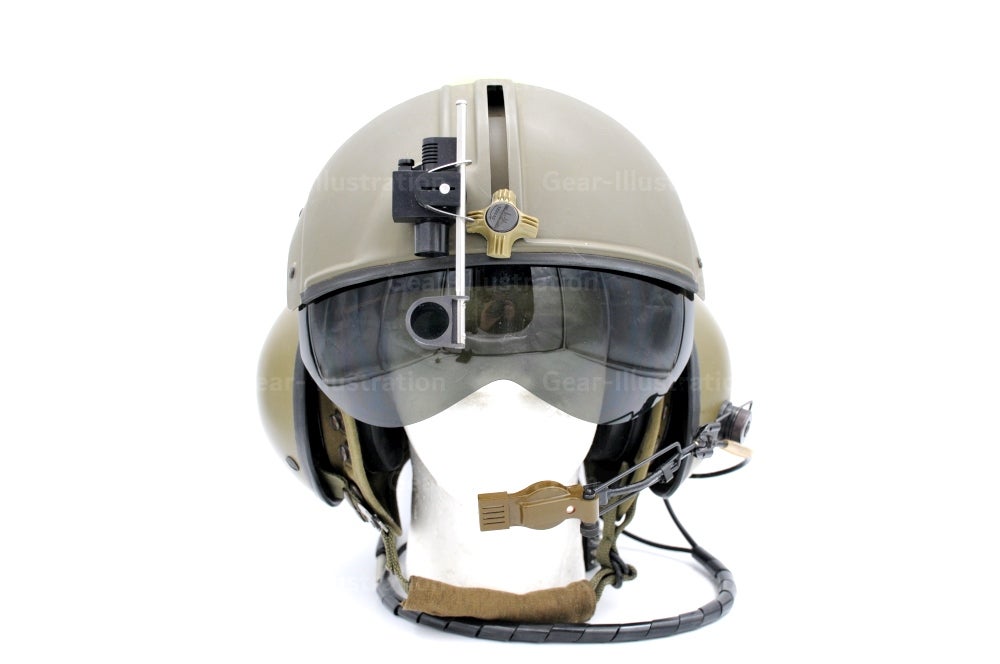
Image by Gear-Illustration.com
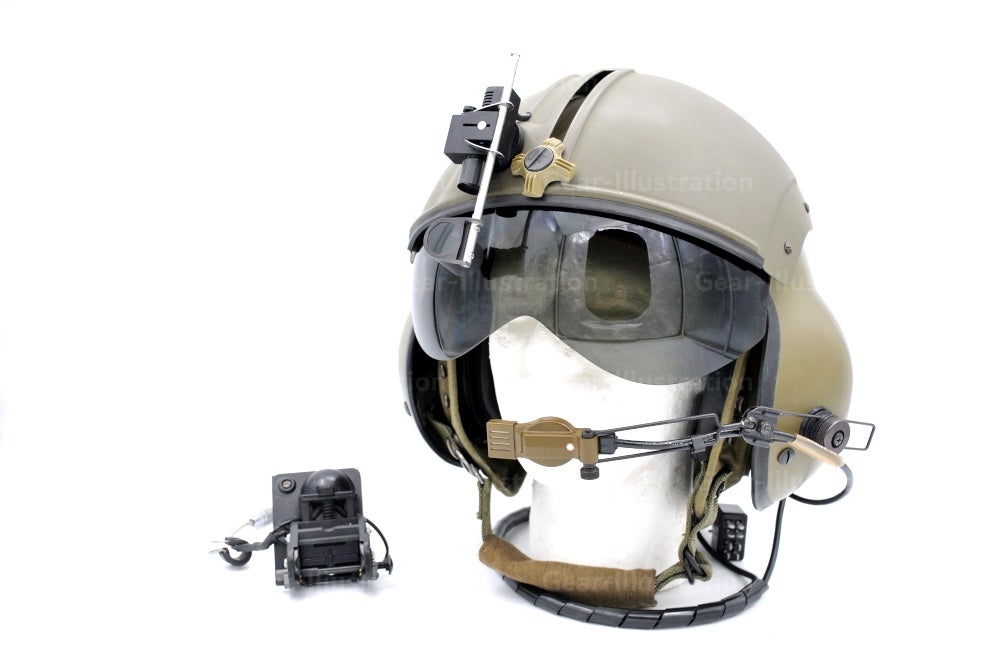
You can see the offset ANVIS mount next to the helmet.
I found these manual illustrations from punisher.com.ua. You can see how the ANVIS mount is offset due to the HSS.

Image by punisher.com.ua

Image by punisher.com.ua


The AVS-6 (V2) comes with the old ANVIS ocular eyepieces. These are 18mm rather than the more commonplace 25mm used in PVS-14s and most dual-tube goggles.
You can see how big of a difference there is between the 18mm ANVIS eyepiece and the 25mm eyepiece. The FOV does not change but you need to have the eyepiece closer to your eye in order to see the full FOV.

Everything else is the same on the AVS-6 (V2). The ball detent has the same forward/backward adjustment dial. IPD is adjusted independently on either side of the bridge and tilt is adjusted by a lever on the left side of the bridge.

I even have the case for the AVS-6 (V2). ANVIS is an acronym and it stands for Aviator’s Night Vision Imaging System.

The foam insert for the case has a specific cutout for the AVS-6 (V2) due to the offset ball detent. It even comes with the old-style battery pack.

PVS-23
The PVS-23 is a newer ANVIS alternative dual tube binocular goggle. This was a ground use ruggedized version of the AVS-9. As mentioned earlier, ANVIS goggles are for aviation purposes so they save weight by using polymer and are somewhat fragile. The PVS-23 solves this with an aluminum bridge. They have added some features for ground use. One of the first things that sets it apart from ANVIS is the objective lenses. They are blue. They only have the blue anti-reflection coating. They lack the chrome-like aviation coatings.

One of the first things you will notice is the IR illuminator integrated into the front of the housing. It even has a refocus lens to narrow the wide beam into a narrow beam for throw.


On the left-hand side of the bridge is a PVS-14 style rotary power switch. Once switched on, pull and rotate to activate the IR illuminator.

ANVIS goggles save weight by not having onboard power. Instead, they are powered via a remote battery pack wired to the ball detent mount. One nice feature about ANVIS ball detent mounts is that once the goggle is flipped up, all power is shut off to the goggle. This ANVIS alternative PVS-23 has the ball detent feature but it also has an onboard battery compartment for onboard power. You do not have to run the onboard power if you have a battery pack connected to the mount.

The ball detent can be adjusted forwards and backwards. But it is easier and faster than traditional ANVIS design. This ANVIS alternative uses a simple push button release (that black semi-circle behind the battery cap tether). Push it inwards towards the ball detent.

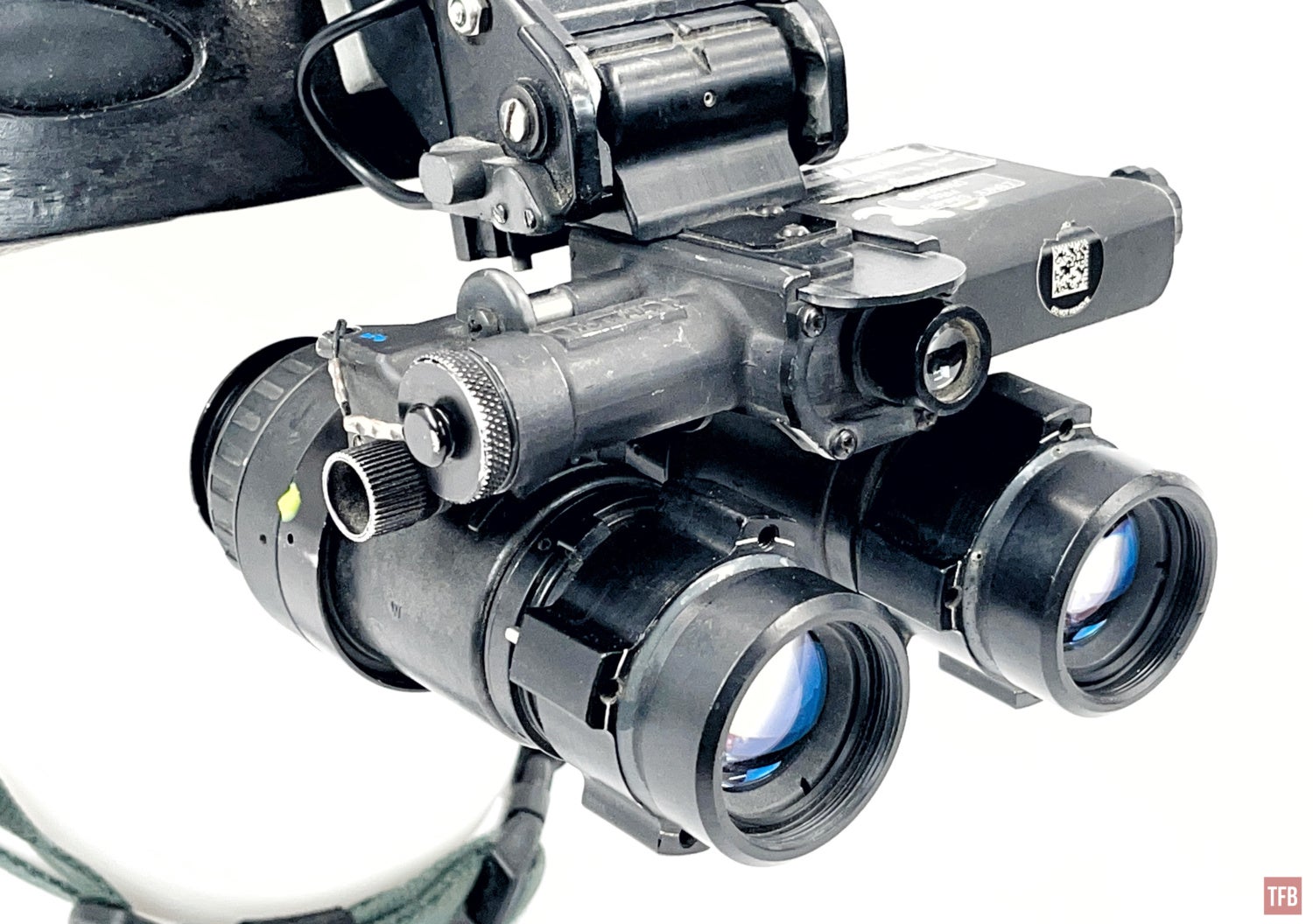
Allegedly CAG used PVS-23 goggles so here is a helmet setup inspired by CAG.
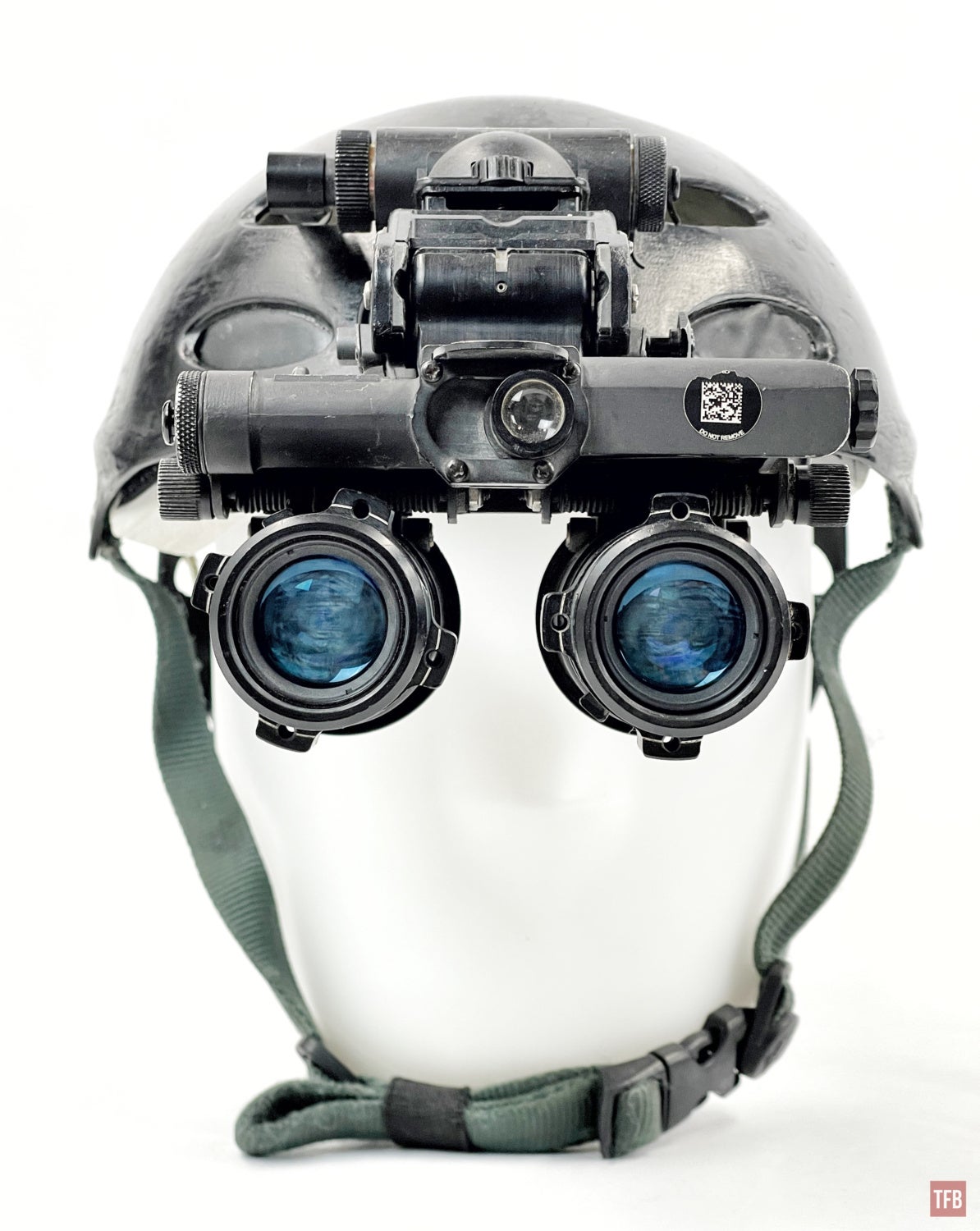
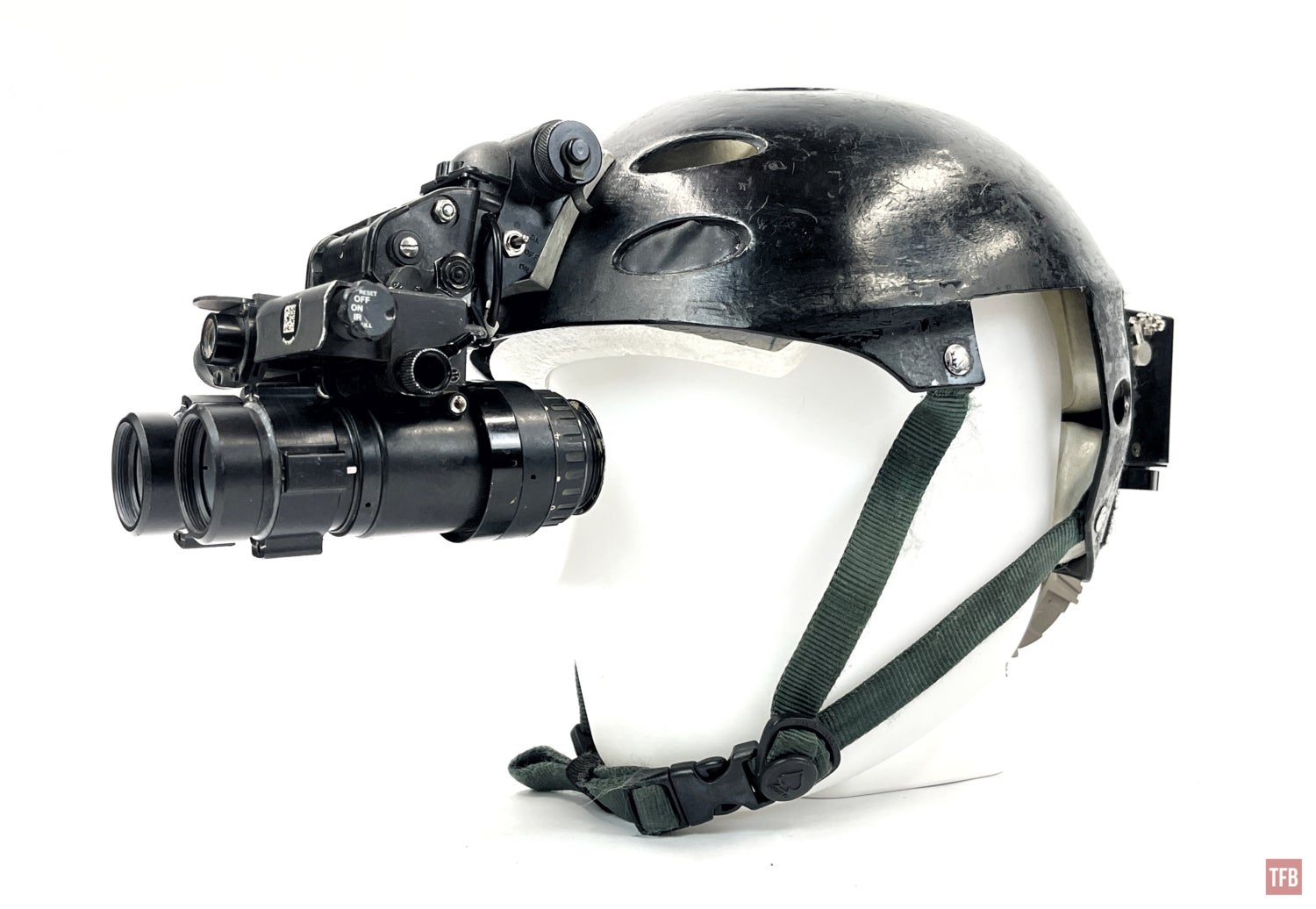
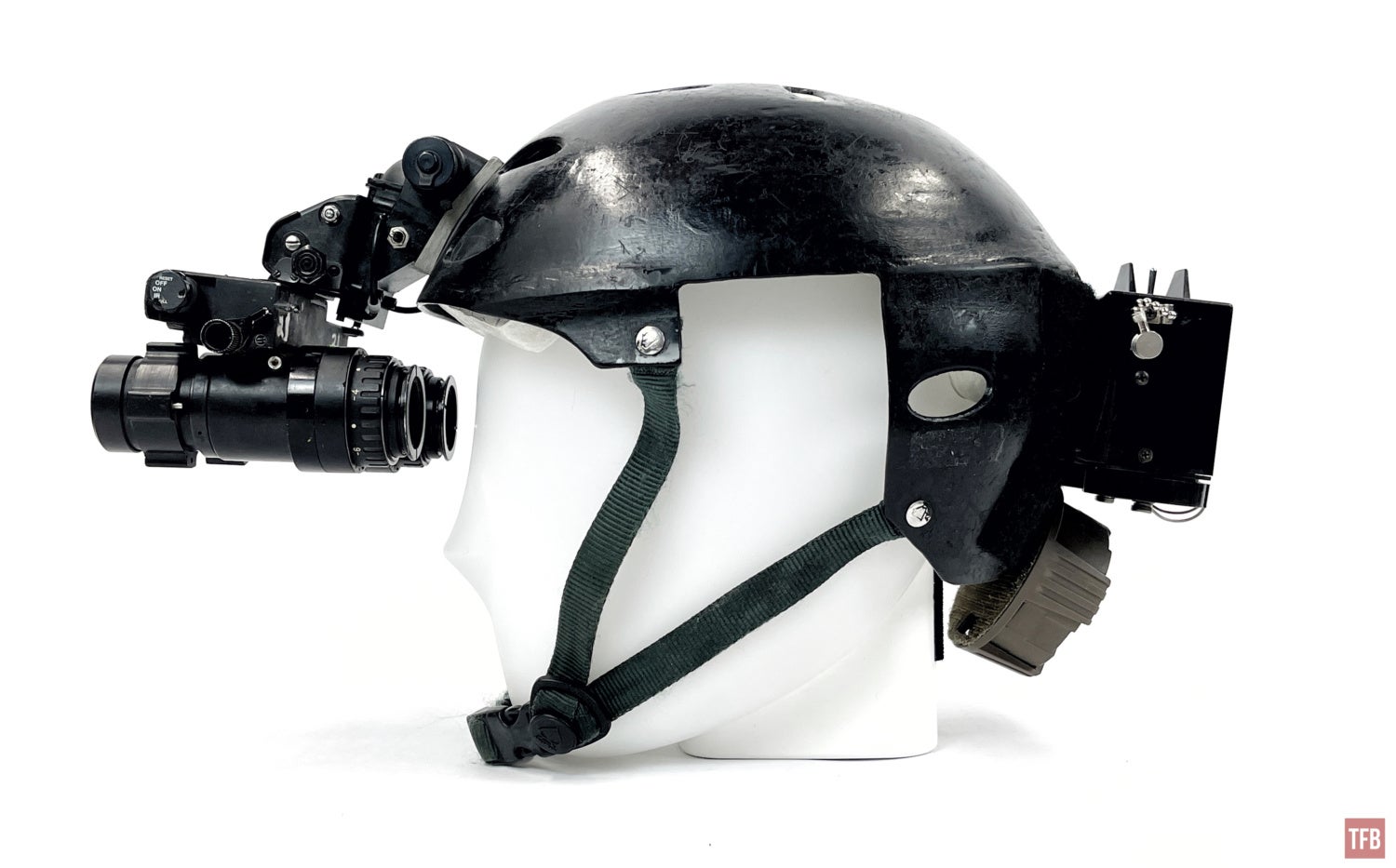
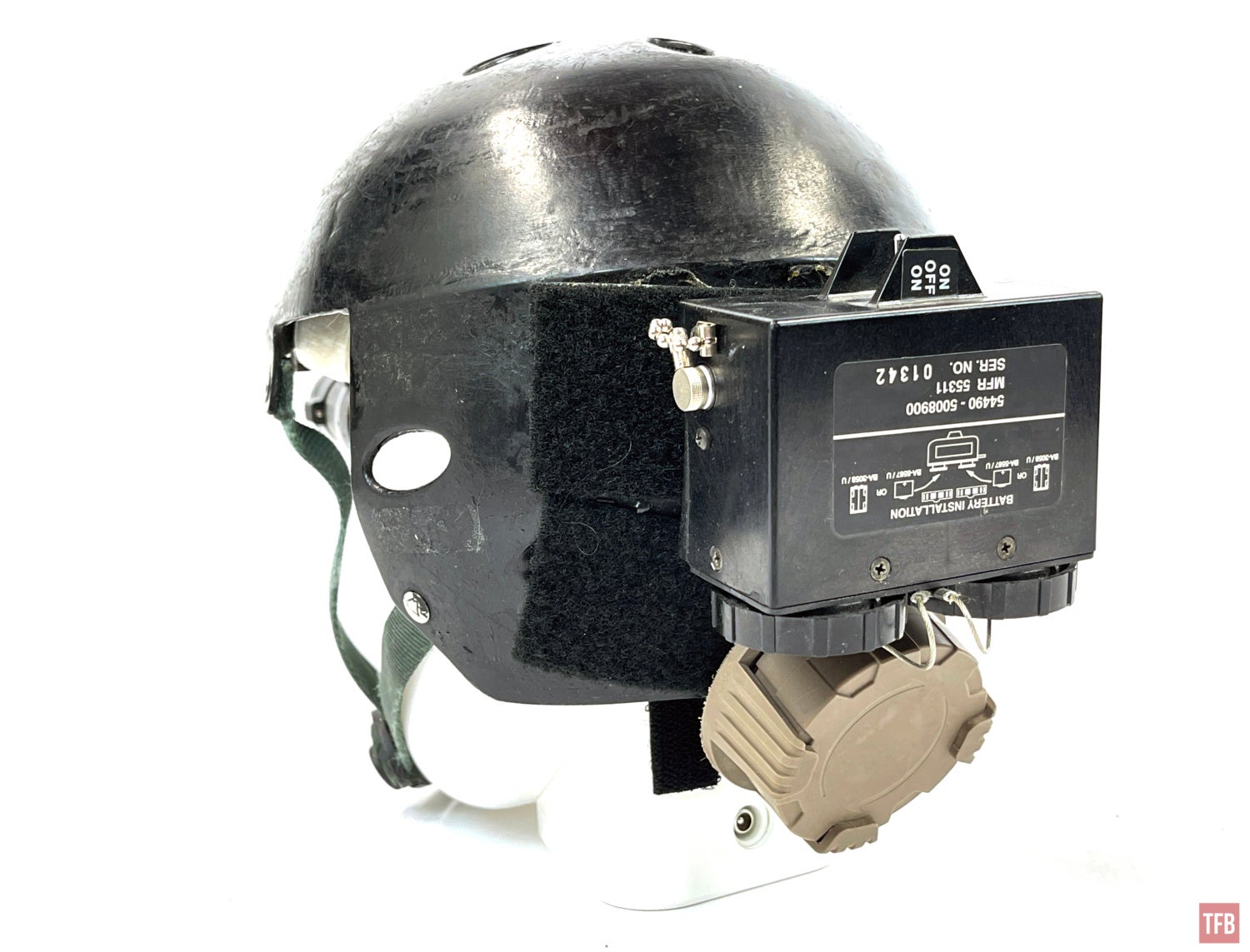
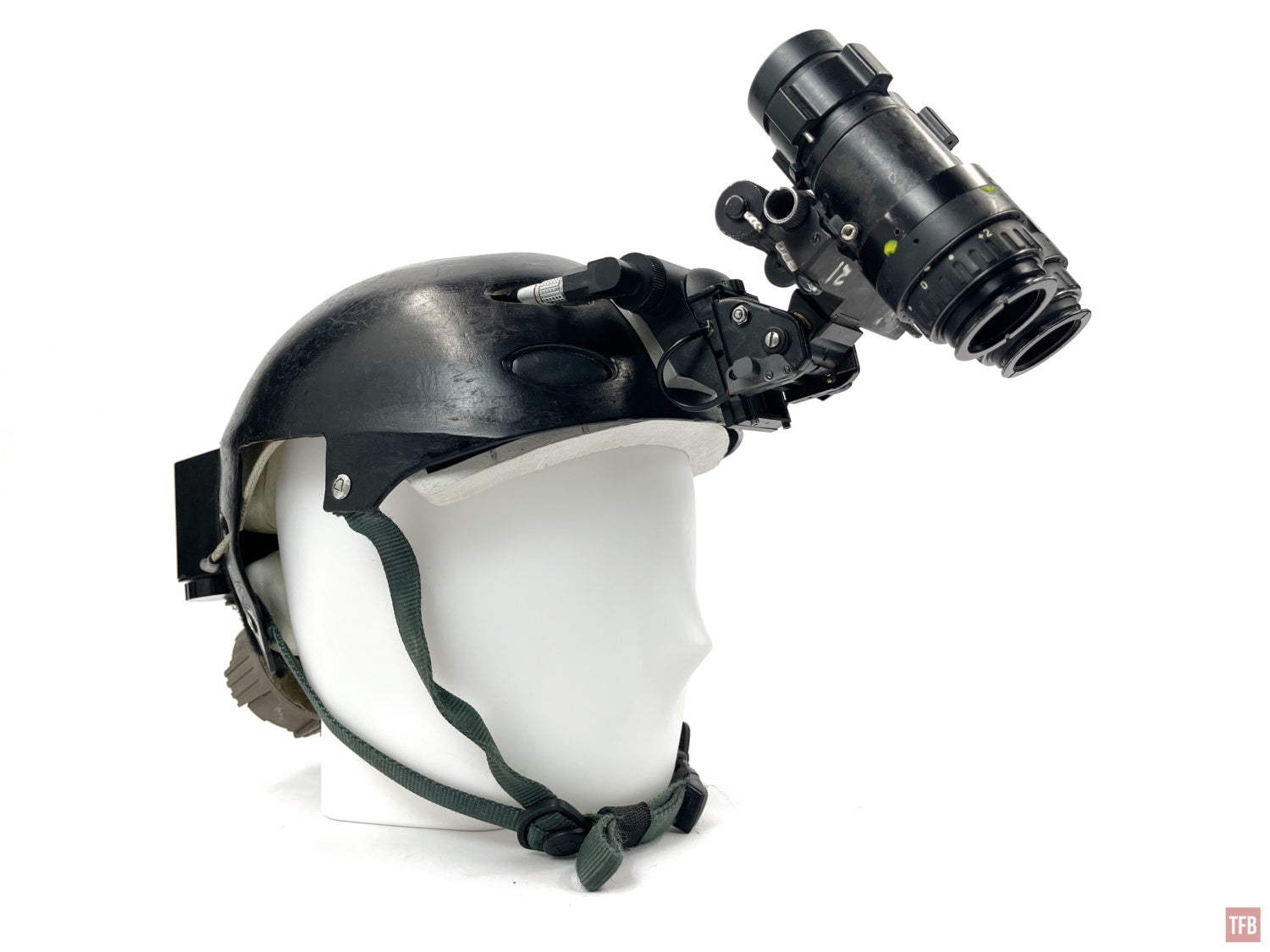
The ANVIS mount has a redundant battery compartment to power the goggle even without a remote battery pack.

Final Thoughts On ANVIS Alternative Goggles
The AVS-6 (V2) is a very interesting solution to a very specific problem. However, no other helicopter pilot helmets have that HSS. I even reached out to a helicopter helmet supplier to see if he had one of those helmets or offset mounts. He has never seen one until I sent him pictures of it.
The PVS-23 is a great ANVIS alternative, especially for ground use. It is stronger with a metal bridge. The ball detent feature is great when using a remote battery pack. When you flip them up, the goggle shuts off. While this is an ANVIS feature and not a PVS-23 specific feature, it is still nice to have Other goggles might shut off due to some gravity switch but they are not reliable. Onboard power is also nice if you want to use the goggles without the mount. Sure, Clip-On Power Supply units exist for ANVIS, but that requires carrying an extra piece. The PVS-23 can have onboard power and there are no extra parts.
Thank you for reading this week’s Friday Night Lights.
 Your Privacy Choices
Your Privacy Choices
